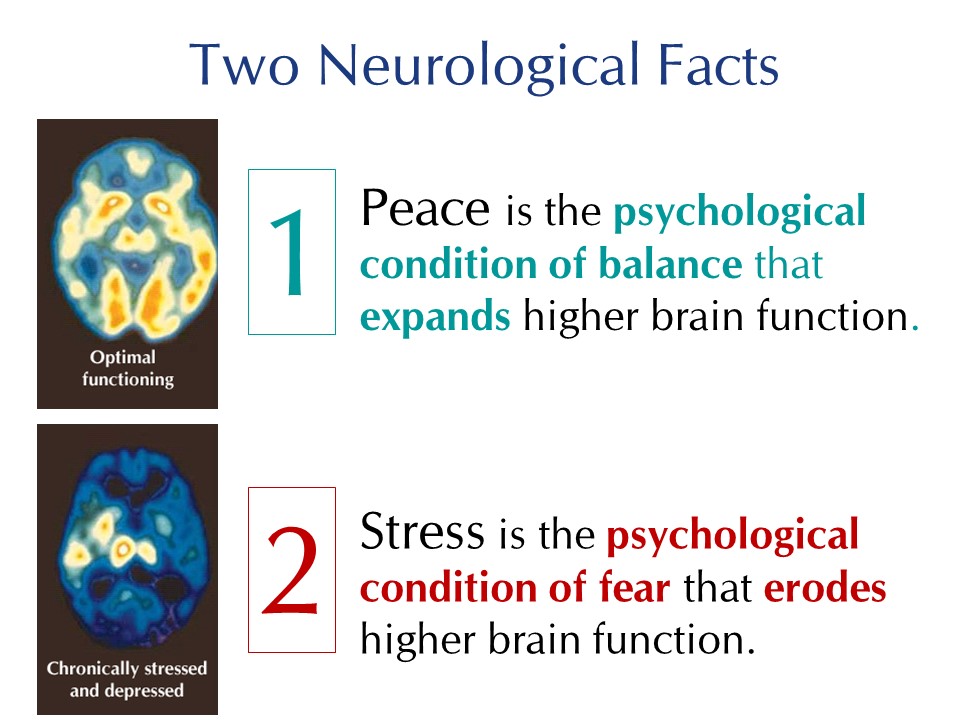Listed below are 10 discoveries about your brain that hold out to you the possibility of turning a brain wired for stress into a brain wired for the Good Life, which is a life of being well and doing well on the way to flourishing. Actualizing this change is simpler than you might imagine and change can happen quickly. It’s called positive neuroplasticity and its the key to the health, wealth and love we desire but has eluded us.
Positive emotions make you smarter. Positive emotions broaden thought, refine behavior, increase mental flexibility, and facilitate creative problem-solving. Attaining a positive emotion state takes practice.
The Cure: Use the Start Your Day Positive Tool. It only requires five minutes of time each morning but it pays dividends for the investment. People who start the day mindfully experience more positive emotions during the day, exhibit more interest in their work, are more likely to feel connected and supportive toward others, and are more likely to sleep better that night.
Reacting to stressors with negativity invites long-term mental health problems: If chronic, negative emotional responses to daily stressors predict psychological distress and emotional disorder ten years later. Yikes!
The Cure: Most emotional negativity begins in negative thinking, which is largely fear-based. Use the Thought Awareness Tool to bust your negative pattern.
Happiness leads to success, not the other way around: Happy people are in general more successful across the board than less happy people, and their happiness is in large part a consequence of having cultivated a positive state of mind. The Cure: Count your blessing periodically. A mountain of research has shown that gratitude promotes a happy attitude. Give attention to what’s right in your life. Practice noticing moments when you feel happy, or peaceful, or connected, or expansive in any way. When your heart opens, even for a second, mark the moment. Tell yourself this moment matters. Tell your brain, This is how I want to feel, so please wire me for it. Then enjoy the moment for as long as it last. Neurologically, marking the moment makes the experience a reward and the brain cues on rewards in forming habits.
Stress and depression can shrink the brain: Major depression or chronic stress can cause the loss of brain volume, a condition that contributes to both emotional and cognitive impairment.
The Cure: It’s about attitude. Accentuate the positive, eliminate the negative.
Financial stress can temporarily lower IQ: People who are worried about having enough money to pay their bills can experience a temporary decrease in their IQ, reducing the brain bandwidth needed to solve a financial problem. It ends up producing a mental state called “scarcity.” Yet research shows that 85% of what we worry about never happens.
The Cure: Use the Clear Button tool to quiet your worried, stressful thoughts so you can focus your mental energy on the solution instead being trapped in the problem.
Your brain needs a 20 minute break every two hours to sustain peak performance: The brain cycles every 90-120 minutes. During the first phase brainwaves oscillate at a fast rate, using sodium and potassium ions to generate electrical signals that enable you to perform at a peak level. But fast brain waves burn through the ions, which means your brain needs to refuel with new ions. That’s the second phase, which necessitates a 20-minute break.
The Cure: A walk under the trees is the best way to take a break, weather permitting. If the weather prohibits, walk around the office. Stop at windows and look out at what’s happening in the world around you.
The more you think on a problem the more you block the creative insight that can solve it.
The Cure: If a problem stumps you, take a quiet walk under the trees and let your mind relax, but keep a mental window open for a creative insight to come through.
Exercise may slow brain aging by 10 years for older people: Exercise in older people is associated with a slower rate of decline in thinking skills that occurs with aging. People who reported light to no exercise experienced a decline equal to 10 more years of aging as compared to people who reported moderate to intense exercise.
The Cure: Hike, walk in a park, or go to the gym at least three days a week. Walking around the neighborhood is a good way to get started if you haven’t been exercising.
Sitting for more than three hours a day can shorten your life by up to two years: We need to pull away from the computer, stand up, and move our bodies.
The Cure: The prescription is simple. At least every hour, stand up, stretch, do some movement, or take a walk to see if your brain offers a creative insight.
